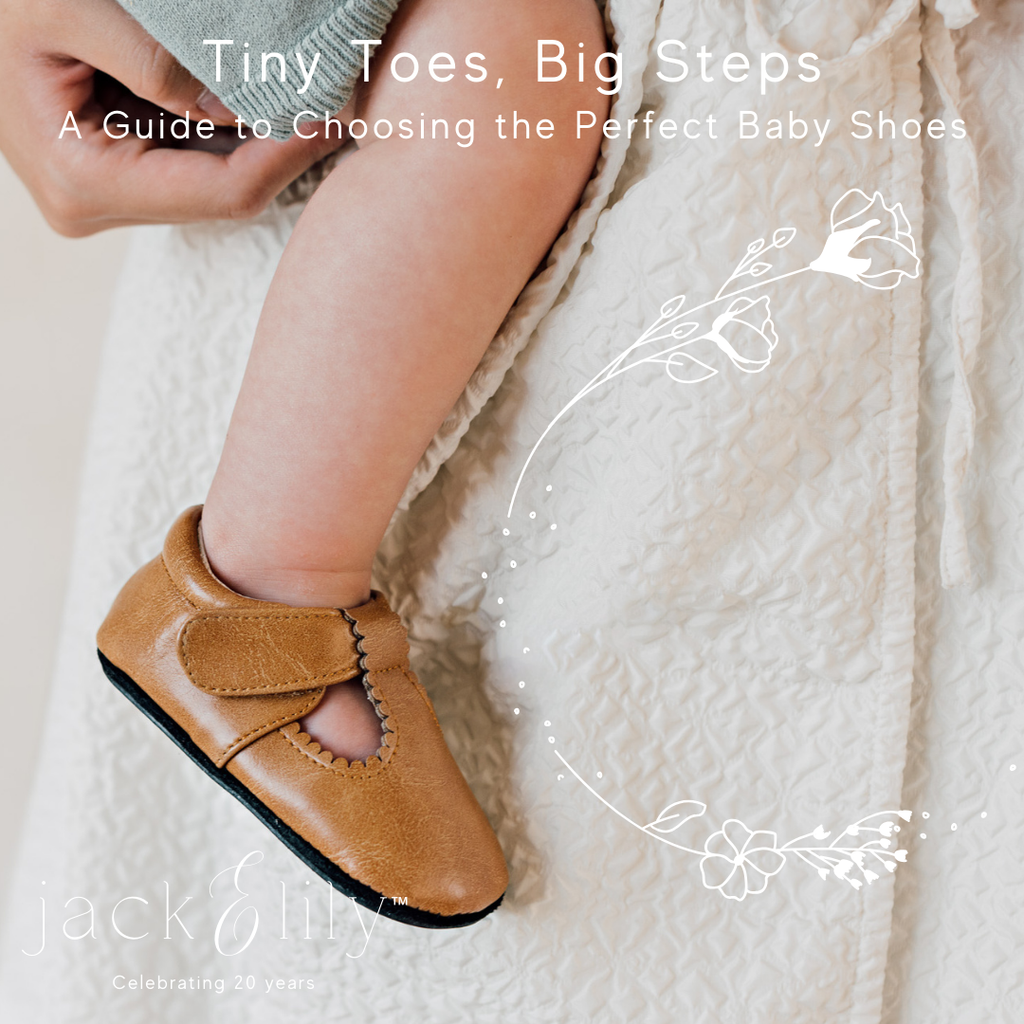Tiny Toes, Big Steps: A Guide to Choosing the Perfect Baby Shoes

As a parent, there are few sights more heartwarming than watching your little one take their first steps. Those tentative, wobbly movements mark the beginning of a journey filled with exploration and discovery. To support those tiny feet on their grand adventure, choosing the right baby shoes is essential. In this guide, we'll explore the importance of baby shoes, when to start using them, and how to select the perfect pair for your precious bundle of joy.
Why Baby Shoes Matter
Baby shoes aren't just cute fashion accessories; they serve a critical role in your child's development. Here's why baby shoes are essential:
-
Protection: Baby shoes protect your little one's delicate feet from sharp objects, rough surfaces, and extreme temperatures.
-
Support: Properly designed baby shoes offer support as your baby starts to stand and take those first steps.
-
Development: The right shoes can encourage proper foot development, ensuring that your child's feet grow healthily.
When Should You Start Using Baby Shoes?
Choosing the right time to introduce your baby to shoes is crucial. Here's a general guideline:
-
Newborns to Crawlers (0-6 months): During this stage, your baby doesn't need shoes. Socks or booties will keep their feet warm and comfortable.
-
Early Walkers (6-12 months): Once your baby begins to pull themselves up and take their first steps, it's time to consider baby shoes.
Choosing the Perfect Baby Shoes
Now that you know when to start using baby shoes, let's dive into how to choose the perfect pair:
-
Proper Fit: The fit is paramount. Ensure the shoes are neither too tight nor too loose. Leave about a thumb's width of space in front of your baby's longest toe to allow for growth.
-
Flexible Soles: Look for shoes with soft, flexible soles that mimic barefoot walking. This helps with balance and natural foot movement.
-
Materials: Opt for breathable, natural materials like leather or canvas. They allow for proper airflow and reduce the risk of sweaty, uncomfortable feet.
-
Easy Fastening: Choose shoes with Velcro straps or elastic laces for easy on-and-off. Buckles and shoelaces can be challenging for tiny hands.
-
Room for Toes: Ensure that there's enough room for your baby's toes to wiggle and move freely inside the shoes.
-
Grip: Check the sole for a good grip to prevent slips and falls as your baby explores different surfaces.
-
Consult a Specialist: When in doubt, consult with a pediatrician or a professional baby shoe fitter to ensure the shoes are appropriate for your child's feet.
Caring for Baby Shoes
To make the most of your baby's shoes, it's essential to care for them properly:
-
Regular Cleaning: Wipe down the shoes with a damp cloth to remove dirt and grime. Avoid immersing them in water or using harsh chemicals.
-
Allow for Airflow: After a day of wear, let the shoes air out to prevent odors and mold growth.
-
Check for Wear: Babies grow quickly, so regularly check if their shoes still fit. You may need to size up every few months.
Choosing the right baby shoes is not just about style; it's about supporting your child's development and ensuring their comfort and safety. With the tips outlined in this guide, you'll be better equipped to make informed decisions when it comes to your baby's footwear. So, as your little one takes those first steps into the world, you can rest assured that their tiny toes are taking big steps in the right shoes.
